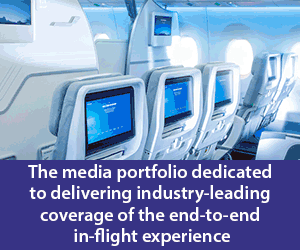Gogo has released its fourth quarter 2018 earnings, with business aviation outperforming commercial aviation activities.
While a decline in service revenue (primarily related to the de-installations of American Airlines ATG aircraft) was offset by an increase in equipment revenues the company posted a net loss of US$59.7 million (contributing to an annual consolidated loss of $162 million), prompting Oakleigh Thorne, Gogo’s president and CEO to claim “We expect to see a return to higher revenue and profit growth in 2020.”
Speaking during a conference call with analysts, Thorne said: “Our ultimate vision is to seamlessly integrate the passengers’ airborne connected experience with their on the ground experience by providing immersive connectivity and entertainment on the aircraft. Between now and that seamless vision, our goal to future proof our customers investments in in-flight connectivity equipment by developing hardware and software that could be modified and upgraded cost effectively as future technologies emerge.”
“One exciting piece of news,” said Thorne, “is that we are having great success selling Gogo Vision, our commercial aviation entertainment product into the business aviation market. We gave a free 90-day trial for GGV to each AVANCE subscriber last year and of those 50% or 341 ended up buying the product taking us to 664 GGV subscribers in the BA segment at year-end.”
Revenues
On a year-over-year basis service revenue grew 13%, with revenue growth led by a 34% growth in equipment revenue based on continued strong sales and installations of the AVANCE L3 and L5 products.
For Gogo’s North American commercial aviation market, take rates were up approximately 30% from 9.9% to 12.9%. According to the company, such strong growth in take rates is due to accelerating usage of 2Ku, increased usage of airline free messaging offers, and continued growth in third party revenue. Entertainment and connected aircraft services revenue grew 12% in 2018 versus 2017.
For commercial aviation in the rest of the world, revenue growth increased 26% in the fourth quarter over the prior year due to installations on 200 additional 2Ku aircraft in 2018.
A notable take away from the earnings is the shift by airlines from the airline directed business model back to the turnkey model. One airline is about to sign a revised contract to this effect with another expected to follow suit.
According to the call, data usage is moving quickly from ATG to satellite with 72.5% of Gogo’s data traffic now on its satellite network versus 47% a year ago.
Boeing Global Services has been installing 2Ku under service bolt on the 787-900 for Air Canada and will install 2Ku in two more Airline’s 787s later this year. Gogo believes it is on track to have its first Boeing line-fit inflation by year-end.
At Airbus, the A330 electronic transmitter issue has been resolved to the satisfaction of EASA. As a result of the ELT holdup, Gogo lost one fleet of 16 aircraft and 10 aircraft that have been delayed for installation. In 2018 Gogo also achieved AIS serviceable installations in the A350 and believes it is on target to achieve its first Airbus line fit installs in 2020.





